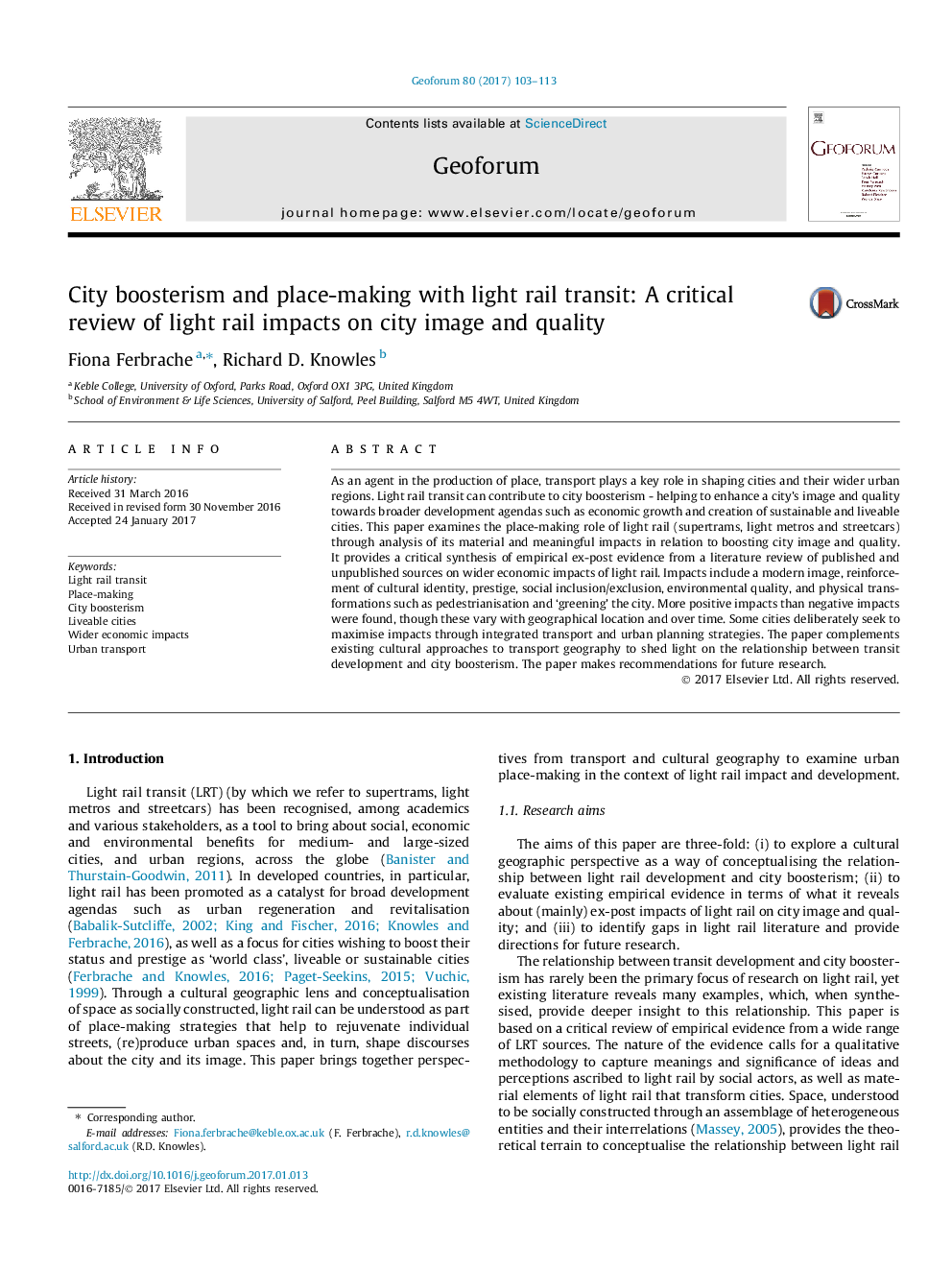| Article ID | Journal | Published Year | Pages | File Type |
|---|---|---|---|---|
| 5073264 | Geoforum | 2017 | 11 Pages |
Abstract
As an agent in the production of place, transport plays a key role in shaping cities and their wider urban regions. Light rail transit can contribute to city boosterism - helping to enhance a city's image and quality towards broader development agendas such as economic growth and creation of sustainable and liveable cities. This paper examines the place-making role of light rail (supertrams, light metros and streetcars) through analysis of its material and meaningful impacts in relation to boosting city image and quality. It provides a critical synthesis of empirical ex-post evidence from a literature review of published and unpublished sources on wider economic impacts of light rail. Impacts include a modern image, reinforcement of cultural identity, prestige, social inclusion/exclusion, environmental quality, and physical transformations such as pedestrianisation and 'greening' the city. More positive impacts than negative impacts were found, though these vary with geographical location and over time. Some cities deliberately seek to maximise impacts through integrated transport and urban planning strategies. The paper complements existing cultural approaches to transport geography to shed light on the relationship between transit development and city boosterism. The paper makes recommendations for future research.
Related Topics
Social Sciences and Humanities
Economics, Econometrics and Finance
Economics and Econometrics
Authors
Fiona Ferbrache, Richard D. Knowles,
